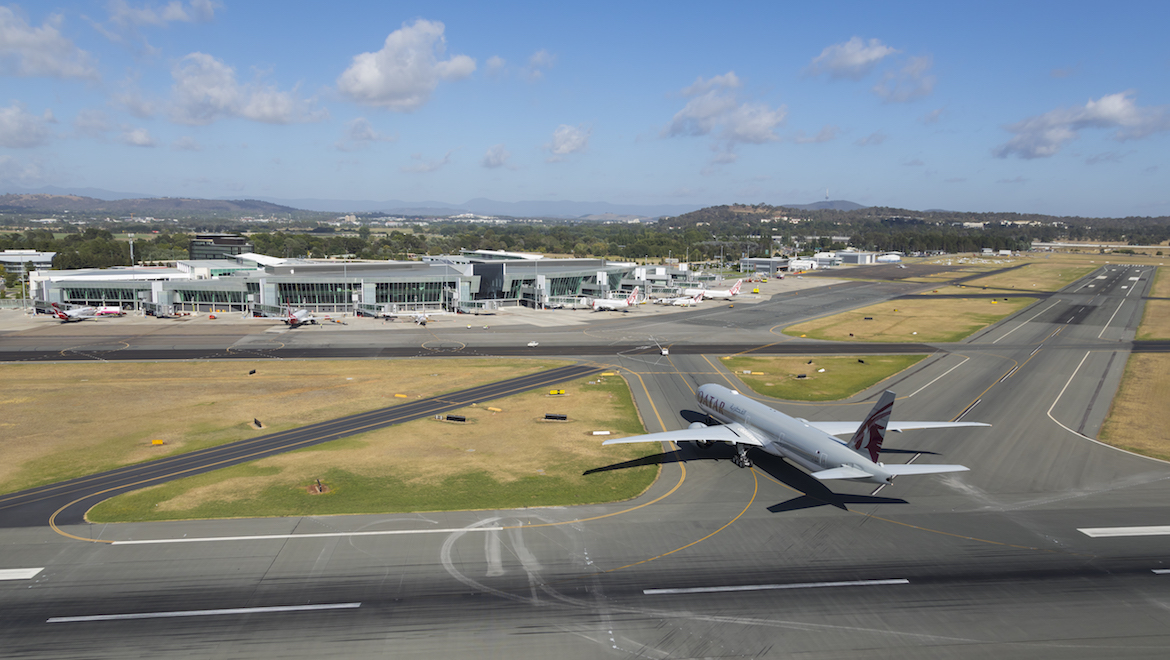
Canberra Airport says it expects the number of passengers passing through its terminal to approach nine million a year by 2039/40, more than double the 3.3 million total for 2018/19.
The forecast was included in Canberra Airport’s draft master plan, which charts the outlook for its operations and development over the next two decades.
It said the prospects for future growth were strong, as the airport focused on attracting more international airlines, including low-cost carriers (LCC) to Canberra.
“We continue to collaborate with the ACT and NSW Governments, who support our plans for growing our aviation business, and we are optimistic about future growth,” Canberra Airport head of aviation Michael Thomson said in a statement.
“Our region has a lot to offer Australia and the world.”
In 2018/19, Canberra Airport had 3.13 million domestic passengers and 170,000 international passengers. By 2039/40 this was forecast to increase to 7.91 million domestic passengers and 996,000 international passengers for a total of 8.90 million, the draft master plan released on August 22 showed.
“If significant low cost carrier services develop before 2025, this growth will be higher,” the draft master plan said.
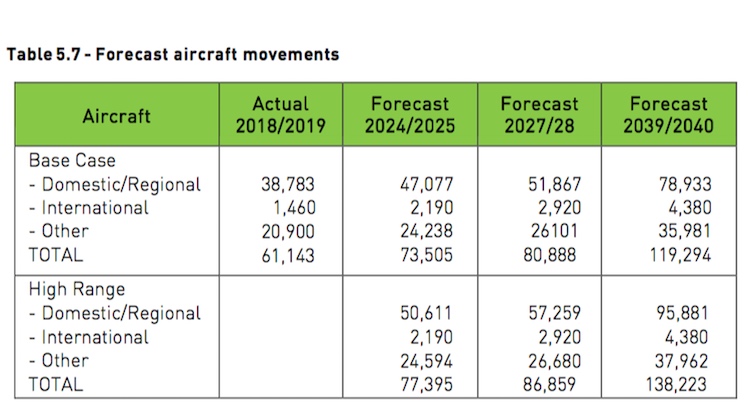
Canberra Airport welcomed its first international flights in September 2016, when Singapore Airlines began four times weekly flights to the Australian capital as part of a Singapore-Canberra-Wellington routing with Boeing 777-200s.
The Canberra-Wellington leg was dropped in May 2018, with Singapore Airlines instead operating a daily 777-300ER Singapore-Sydney-Canberra-Singapore service.
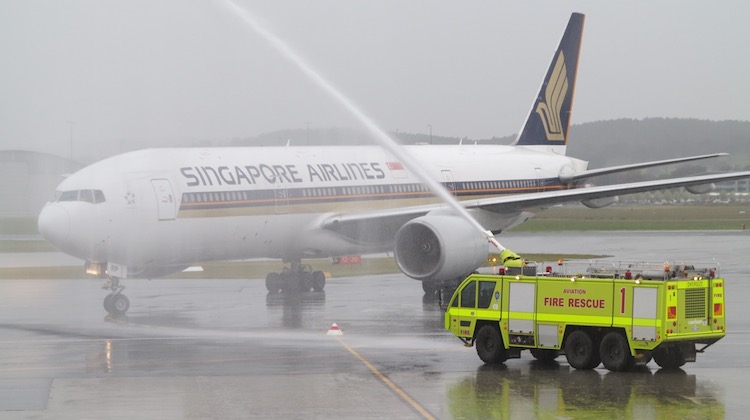
Qatar Airways became the second airline to offer international flights in February 2018, when it began a Doha-Sydney-Canberra service with Boeing 777-300ER equipment.
“These flights are in the early stages of introducing Canberra as a tourism destination to the world and are having a ripple effect on people across Asia and Europe,” the draft master plan said.
“This introduction is only just starting to gain traction.”
The draft master plan said further discussions with other international carriers and low-cost carriers (LCC) were ongoing as part of efforts to grow the number of international flights from 14 a week currently, as well as to increase the LCC presence in Canberra.
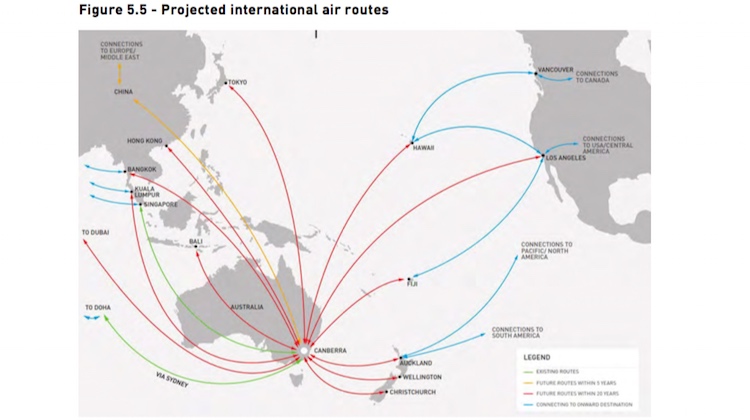
Canberra Airport was also “well placed to operate as an alternate freight airport” given its curfew-free status.
“Based on the experience of highly successful operations at airports in secondary cities in North America and Europe which in some cases see large numbers of nightly freight flights this 2020 Master Plan envisages international, trans-Tasman and domestic freight flights congregating at Canberra, exchanging freight, and departing again to their destination,” the draft master plan said.
The first Qatar Airways flight has landed in #Canberra! @9NewsCanberra #9News @CanberraAirport pic.twitter.com/0IXnhSZJyA
— Aggie Bradshaw (@AggieBradshaw) February 11, 2018
In terms of domestic services, Canberra Airport said the existing route network would “drive a substantial proportion of the domestic growth”, in part supported by on-carriage demand from international passengers.
“Additional services on existing and former routes will therefore remain a priority for Canberra Airport as part of its overall growth strategy,” the draft master plan said.
“It is highly likely this will include Tiger building additional services onto the existing eight Melbourne and four Brisbane return services per week and create opportunities for Jetstar to commence operations at Canberra.
“This will correct a market anomaly which sees little low cost carrier operating into Canberra despite the greater Canberra regional population of over 900,000 making the Canberra region the sixth largest population centre in Australia.”
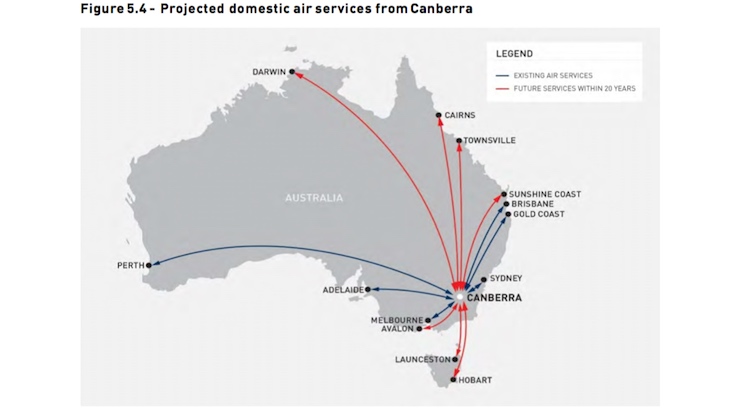
Canberra Airport also forecast growth in regional services as airlines reopened nonstop routes that were dropped when Brindabella Airlines collapsed.
The draft master plan noted FlyPelican launched nonstop flights to Newcastle and Dubbo and expressed confidence that there would eventually be flights to destinations such as Albury and Merimbula added within the next five years.
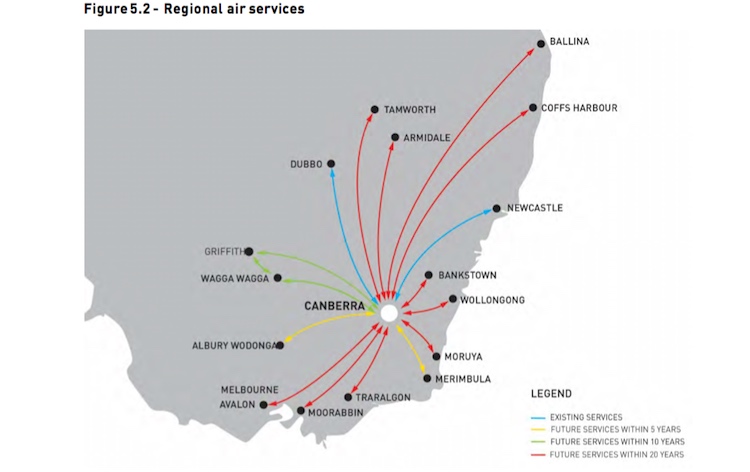
“It is noted that increasing congestion at Sydney [Kingsford Smith Airport] and the Australian Government’s decision to progress a new Western Sydney Airport to commence operation by 2026 will serve to strengthen the viability of the national network, in the national interest,” the draft master plan said.
Canberra Airport executive chairman Terry Snow and managing director Stephen Byron said cutbacks to the public service over the past decade meant the region could no longer rely on the public sector as a driver of economic activity.
“Our future lies in diversifying and attracting new businesses and industries, particularly those that reflect the strengths of our region; smart offerings in education, tourism, IT and cyber security, defence and national security, transport, light manufacturing and niche agricultural export opportunities,” the pair said in the foreword to the annual report.
“Canberra Airport stands poised to play a key role in that future.”
The draft master plan said the existing capacity of Canberra’s passenger terminal was eight million passengers a year. This could be increased to 12 million passengers a year with “relatively modest additions”.
“The terminal has significant capability in terms of meeting current and future growth,” the draft master plan.
Further, the draft master plan said both the runway and the terminal were currently operating currently at about 30 per cent of capacity.
The master plan said navigation aids would continue to be upgraded over the next two decades to enhance operability in low visibility conditions in consultation with airlines, the Civil Aviation Safety Authority (CASA) and Airservices Australia. It would continue to operate as a 24-hour airport.
“The runways and airfield will continue to operate without night time operation restrictions, representing a competitive advantage for the region particularly for international flights and movement of freight,” the master plan said.
In April, Canberra Airport announced it was extending the taxiway for the main runway to streamline arrivals and make it safer for aircraft to move about on the airfield.
The number of aircraft movements was expected to grow from 61,143 in 2018/19 to 119,294 by 2039/40.
Under the Commonwealth Government’s Airports Act, Australia’s federally leased airports are required to prepare a 20-year master plan every five years – soon to be every eight years following changes in legislation. A public consultation process will follow the release of the 2040 master plan, with Novemebr 6 2019 the deadline for written submissions.
The full draft master plan can be found on the Canberra Airport website.
Canberra Airport’s previous master plan was approved in 2015.












